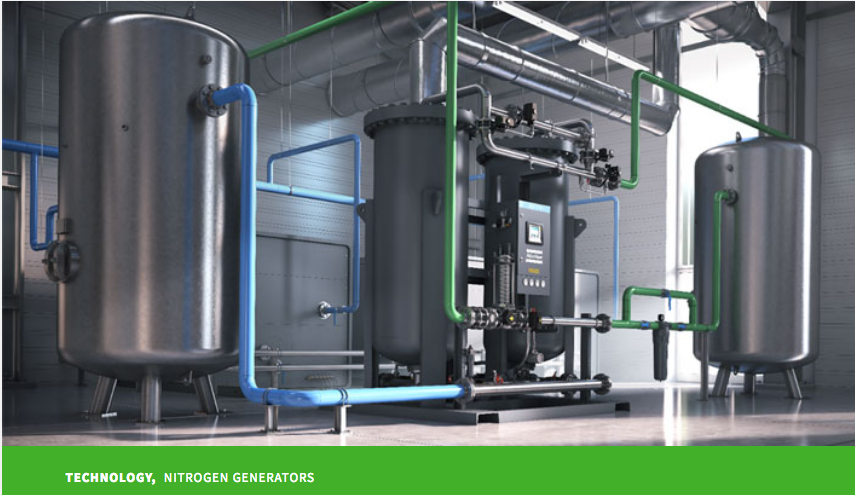Why Brewers Need Onsite Nitrogen Generation
Breweries that make the switch to onsite nitrogen nitrogen generators can save time, reduce their carbon footprint, and cut costs in the long run

As published on The Compressed Air Blog
by Dorothy Parnell
Surveys say that beer is the alcoholic beverage of choice in the U.S. In 2017, 40 percent of alcohol consumers said they most often drank beer while 30 percent chose wine and 26 percent opted for liquor. Made from four primary ingredients of grain, hops, yeast and water, beer has been a popular beverage for thousands of years.
In most brewing facilities, nitrogen is used in several phases of the beer making process from purging tanks between uses to keeping wort, beer and residual mash from oxidizing and contaminating the next batch of beer. Nitrogen can also be used to push beer from one tank to the other, and in the final stages of the brewing process, it’s used to pressurize kegs prior to shipment and final use.
Benefits of onsite nitrogen generation
- Saves time. Breweries that enlist third party vendors for nitrogen risk delayed and sometimes cancelled deliveries. Not having the nitrogen necessary for brewing applications halts production, creates downtime and contributes to potential profit losses. Once the supply does arrive, it needs to be brought in and attached to the old system while old canisters are removed. With an onsite nitrogen generation system in place, it saves any wait time and allows operators to focus on other functional tasks.
- Minimizes gas waste. Without an onsite nitrogen generator, brewing facilities are often left to buy liquid nitrogen in bulk. The large amount of nitrogen is normally not used at once and remains in tanks with ambient heat causing it to expand. If the built up pressure is not released, the tank can explode. To prevent this from happening, the tanks must blow off for gas to be released, which wastes unused nitrogen, time and money.
- Lowers costs. Purchasing nitrogen cylinders and dewars can cost on average $2.50 - $5.00 CCF. Remote areas may pay up to three times more, depending on how far the facility is from the gas distribution center. With onsite nitrogen generation, brewers are paying closer to $0.10 to $0.15 CCF with the potential to save up to 75 percent on nitrogen costs.
- Reduces carbon footprint. Currently, most breweries in the U.S. utilize carbon dioxide for inerting tanks and transferring products between vessels and then from the vessel to packaging. Switching from carbon dioxide to nitrogen is a cost-effective and industry-accepted alternative for these applications, helping to reduce gas requirements by up to 70 percent. Breweries who make the switch to onsite nitrogen can realize a payback period of just one to two years.
Although the initial cost may deter brewers from making this investment, nitrogen generators can save time, reduce waste and cut costs in the long run. Depending on usage, brewing facilities may break even within the first two years of installation.
To learn more about Atlas Copco, visit The Compressed Air Blog.

